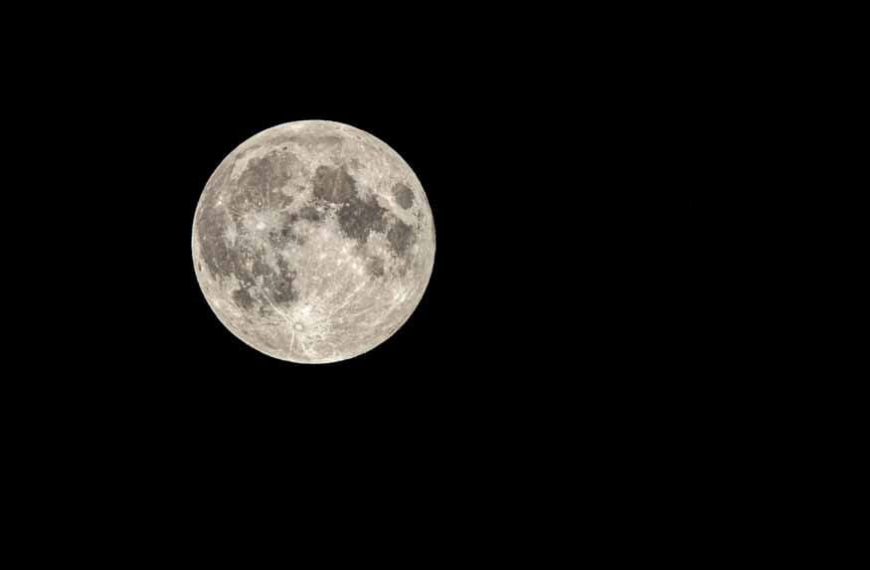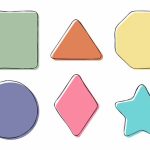The orb that we see every night in the sky as it waxes and wanes has never failed to fascinate people since the days of yore. Whether it is its radiant beauty or its role in astrology, science and folklore, it has always aroused a sense of wonder and mystery in people. From understanding how the moon was created to the phases of the moon, there is lots of interesting trivia to keep kids asking for more. The moon plays an extremely vital role in the way Earth exists and we have some interesting facts about the moon that are sure to intrigue you. So, let’s look at these fun facts about the moon which are sure to make the moon all the more interesting to kids.
The Moon’s Size and Role
- The moon is the 5th largest natural satellite of the solar system and the Earth’s only permanent natural satellite. It is the largest planetary satellite as compared to the size of the planet that it orbits.
- Among those whose densities are known, the Moon is the second densest satellite.
- The Moon rotates in synchrony with Earth so it always shows Earth the same side. That side has large dark plains that are visible to us. The part that Earth can see is known as the ‘near side’ and the other side is the ‘far side’.
- Though the moon shines brightly in the night sky, its surface is actually dark as it has no light of its own. It just reflects the sunlight the way Earth does.
- Though the Sun and Moon appear to be about the same size from Earth, they are actually not the same size. The Moon is about 400 times smaller than the Sun and also 400 times closer to Earth than the Sun which is why they look the same size.
- The Moon was about 10 times closer to Earth at the beginning than it is now. Every year the Moon moves about 3.8 cm or 1.4 inches away from Earth which is around the same rate at which your fingernails grow.
- The Moon came into being when a rock, the size of Mars called Theia, crashed into Earth about 4.5 billion years ago.
- Like Earth, the Moon has moonquakes caused by the gravitational pull of Earth. They can last up to an hour but are weaker than earthquakes. They are caused by meteoroids which collide because of Earth’s gravitational pull.
- The Earth and Moon exert a gravitational pull on each other and this controls the tides and waves of the oceans. Along with the water, the Moon makes the Earth move as well. As it orbits around Earth, it causes rocks to rise and fall just like it does with water. The effect is not as significant as with water, the surface of Earth does move by a few centimetres with each tide.
- Water is present on the Moon in the form of trapped ice on and under its surface. This is found on areas of the Moon which are permanently in shade and are thus extremely cold. This water most probably came on the Moon via comets.
- It takes the Moon 27.3 days to orbit around Earth once.
- Except for Earth, the Moon is the only place where humans have been. In July 1969, Neil Armstrong and Edwin Aldrin were the first humans to go to the moon and till date 12 people have been to the Moon.
- The moon has a very thin atmosphere called the exosphere so humans cannot breathe on the Moon. Astronauts require space suits and helmets to breathe.
- The Moon is made of oxygen and a combination of minerals like silicon, iron, magnesium, aluminium, calcium and other trace elements. It is not made of cheese as many like to believe.
- The Moon is basically a 3,476 km in diameter, dusty ball of rock and is roughly a quarter of the size of Earth.
- Its surface comprises mountains, huge craters and flat plains made of hardened lava and are called ‘seas’. There is no rain or breeze on the Moon and so the footprints left by astronauts are still present on the Moon’s surface today.
- The Moon appears to change shape every night because as it orbits around the Earth, the Sun lights up different parts of its surface and so what we see changes, the Moon itself doesn’t change. These are called phases of the moon. A full moon is when a whole side of the moon is lighted up by the sun and is visible from Earth. There is one full moon every month.
- The Moon rotates on its own axis like Earth and takes around the same time to make a full rotation and revolution. As a result, we only see around 60 percent of the Moon at any given time.
- The temperature of the Moon ranges from extremely hot to extremely cold. When exposed to the Sun, the temperature reaches 127°C and when not, temperatures can fall to around -153°C.
- The Moon too has gravity like Earth but it’s much weaker at only one sixth of the Earth’s gravity. As a result, you would be much lighter if you were to stand on the Moon and could bounce around.
- There are many huge craters on the moon’s surface caused by comets and asteroids crashing into it.
- Mountains are present on the Moon and the tallest mountain is Mons Huygens. It has a height of around 16,000 feet and is a bit more than half the size of Mt. Everest.
- The moon is 239,000 miles away which is approximately 45 times longer than the Great Wall of China.
- Unlike the planets Jupiter, Saturn, Uranus and Neptune, the moon has no rings.
- A lunar eclipse occurs when Earth, Sun and Moon are aligned during their orbit. The Earth blocks the sun from shining on the moon, due to which it is in shadow.
- The Moon is used as a map by birds during migration season for their flight paths.
- If it weren’t for the Moon, the Earth would rotate much faster and result in 8 hour long days and winds that blew at 100 miles an hour.
- The Moon isn’t really spherical, it’s shaped more like a lemon because of the constant gravitational push and pull between it and Earth,
- Many astronauts have suffered symptoms similar to hay fever after coming into contact with moon dust.
- The Moon has been declared as an international common property under the International Moon Treaty.
We hope these fun facts about the moon as well as the strange facts about the moon kept your kid interested and keen to learn more. These interesting and real facts about the moon can be accessed on the EuroKids website and you will be able to get a lot more information there to keep your child’s curiosity piqued.















